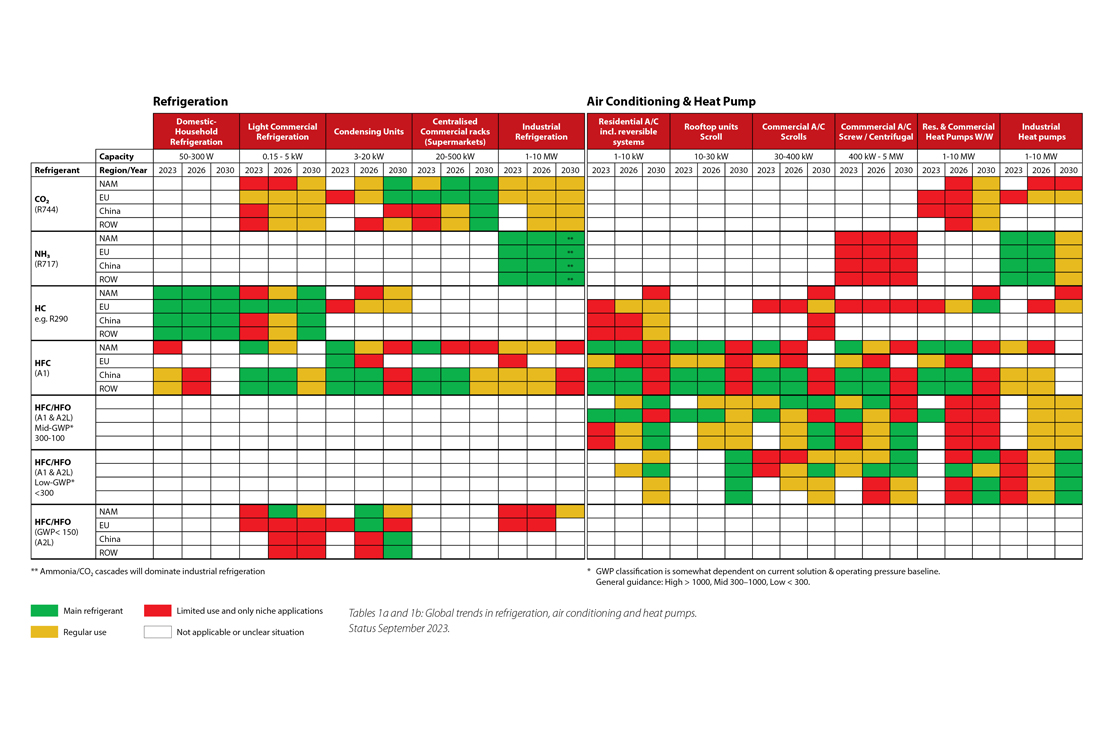
The sustainability triangle shows the three sustainability parameters and their diverse facets. Both system manufacturers and users want long-term solutions that are environmentally benign, safe, and affordable. Natural refrigerants have a low-GWP and are efficient, and we expect them to become the preferred choice whenever possible; though safety will still be a limiting factor in regulating the usage of natural and some HFC / HFO refrigerants.
The trend shows a growing acceptance of mildly flammable, A2L refrigerants, especially now that they have been incorporated into the new ISO and IEC standards. We also see highly flammable, A3 refrigerants increasingly being used in smaller systems that are heavily supported by the new IEC 60335-2-89 standard.
In the context of being able to handle flammable refrigerants in the field, the Refrigerant Driving License (RDL) has made big progress as was reported at the Montreal Protocol meeting in 2019. RDL aims to develop the service sector to encourage competent and safe servicing and installation. It addresses the main barriers that currently inhibit the mass introduction of low-GWP refrigerants and as such have become important in the global phase-down of HFCs.

Our international group of experts within Danfoss has projected what we see as the likely refrigerant outlook. This outlook is summarized.
CO2 is widely used in industrial refrigeration and commercial refrigeration racks and we believe that this trend, which started in Europe, will extend to the rest of the world. CO2 heat pumps might also become more used.
We foresee ammonia continuing to be a very well accepted, particularly in industrial refrigeration applications, though its toxicity means requires unique safety measures. We expect that a solution using both CO2 and ammonia will be mainly used at some point in the future. We see the very energy-efficient hydrocarbons playing an important role in low-charge systems around the globe. We believe that HFCs will not disappear, but will be limited to those with the lowest GWP and will be combined with HFOs as is already happening. HFC and HFO are now moving towards more environmentally friendly, but often mildly flammable, versions, making safety precautions all the more important.
The demand for low-GWP refrigerants will continue to challenge our current perception of which refrigerants can be used in certain applications, but will also drive innovations in system design.
